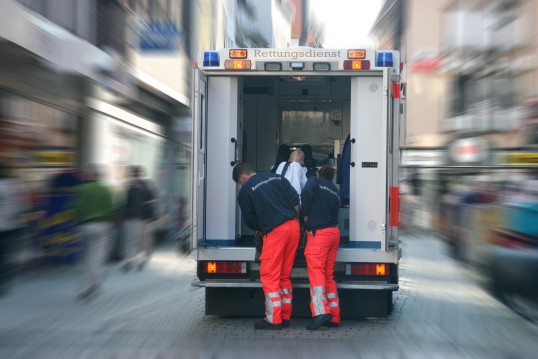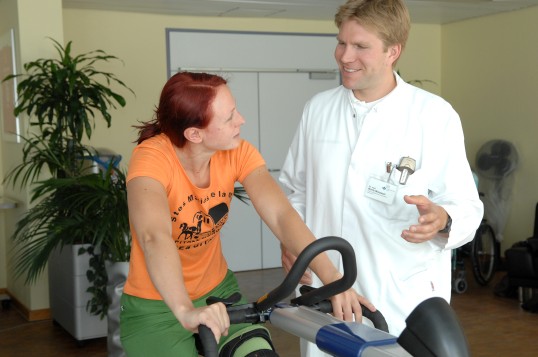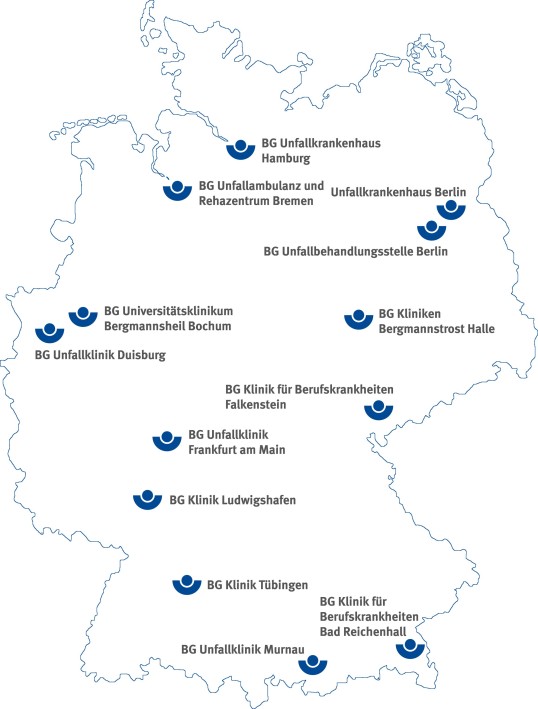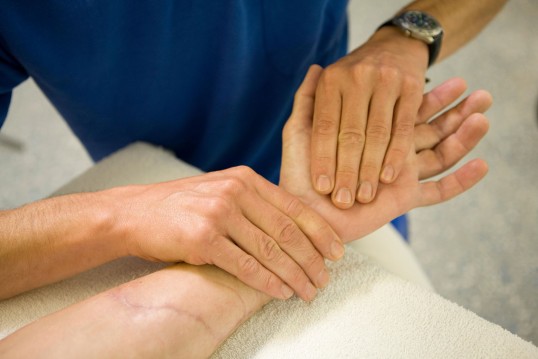Medical care

Source: © Bobo, fotolia.de
Following an occupational accident, competent medical care of the insured individual is particularly important. This medical care is delivered "from a single source" under the statutory accident insurance system. Approximately 3,500 accident insurance consultants appointed by the statutory accident insurance institutions provide patients with the necessary care and determine the form to be taken by subsequent treatment. The consultants, who are surgeons or orthopaedic specialists with particular expertise in occupational medicine, have skilled personnel and the latest medical equipment at their disposal.

Source: © Dorothea Scheurlen / DGUV
Medical treatment
No time limit is imposed upon the medical treatment. It encompasses all suitable measures, in particular:
- First aid (rescue)
- Medical and dental treatment
- Pharmaceuticals and dressings
- Treatment, including physiotherapy and kinesitherapy, speech therapy and occupational therapy
- Prostheses, and orthopaedic and other aids
- Load testing and work therapy
- Home nursing
For insured persons who require assistance on a considerable scale for certain everyday tasks, nursing care benefits are paid, or home or institutional care services provided.

In-patient treatment
Victims of severe injuries or occupational diseases receive in-patient treatment in the eleven dedicated clinics operated by the statutory accident insurance system itself or some 800 further hospitals which are authorized to provide the relevant medical treatment. All clinics are staffed by highly qualified personnel and feature special medical departments and the necessary infrastructure.
Special centres exist for children and young people who have suffered craniocerebral trauma. These centres feature a hospital school for example in which children are prepared for their return to their former school or an alternative suitable school.

Source: © BG RCI / Bernward Bertram
Rehabilitation
The comprehensive system of care provided by the accident insurance system also includes medical, occupational and social rehabilitation. Where possible, preparations for the patient's return to his or her occupation begin whilst the medical treatment is still in progress. Medical rehabilitation follows acute treatment. Patients may be treated as in-patients within the accident insurance institutions' own clinics or other approved rehabilitation clinics, or as out-patients in specially qualified physiotherapy facilities.
The principle that "rehabilitation takes priority over pensions" means that priority is always given to the best possible medical care for the insured person and to their occupational and social re-integration. No cap is placed on the costs, since successful rehabilitation is the best solution for both the insured individual and all other parties. A pension is paid only when all realistic and reasonable rehabilitation measures have been exhausted.